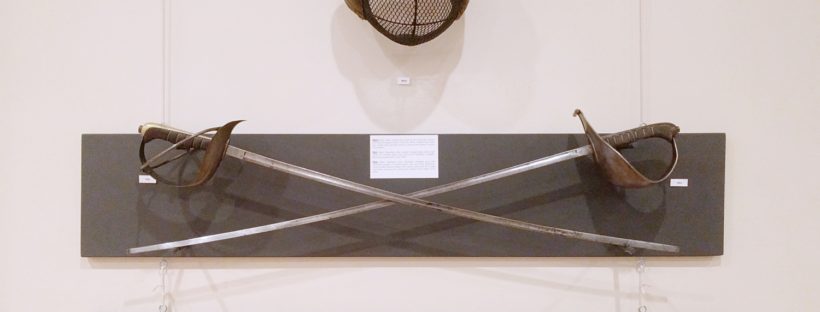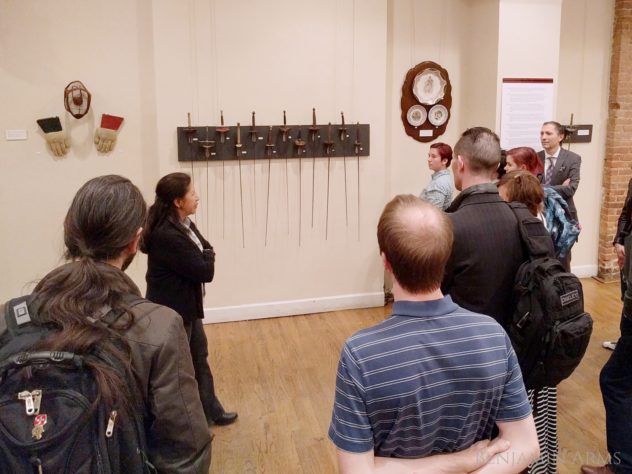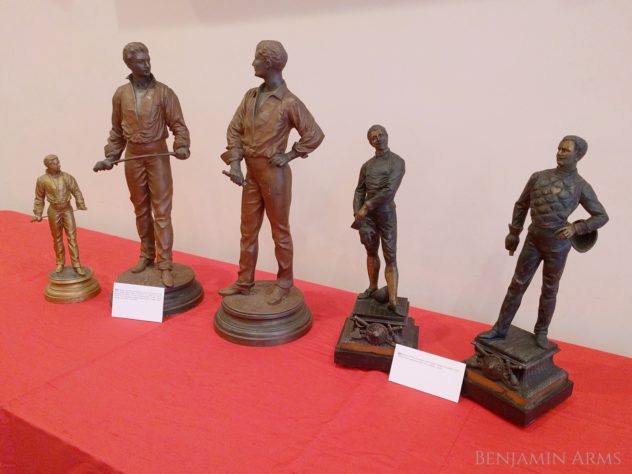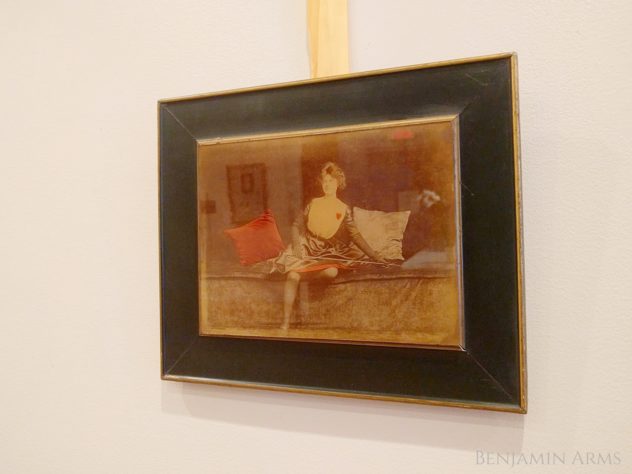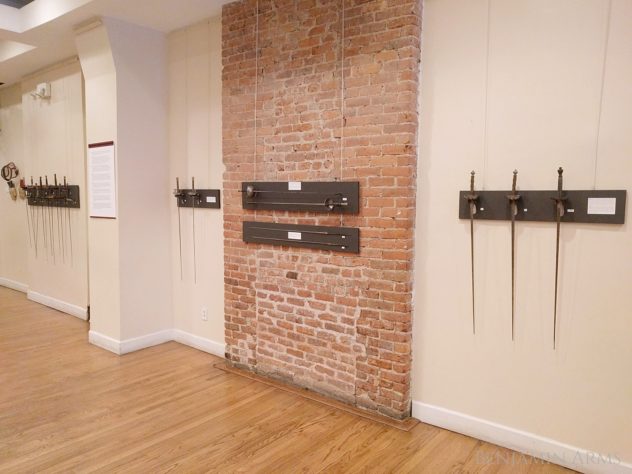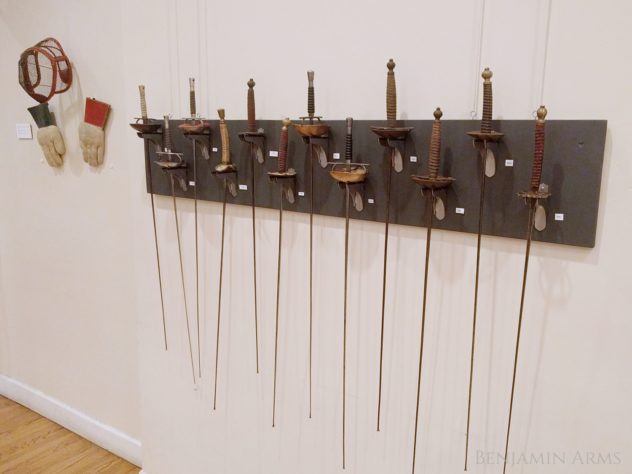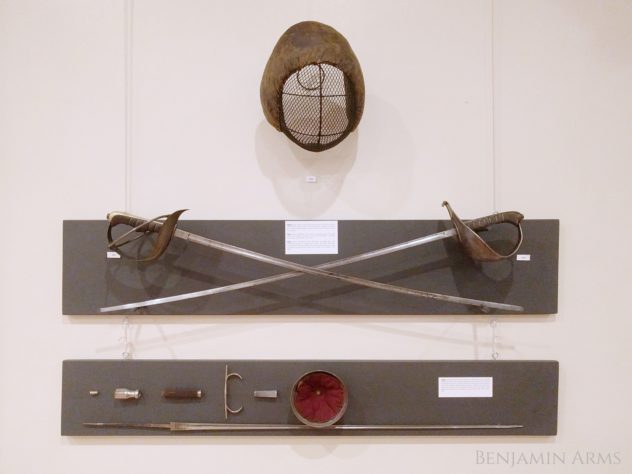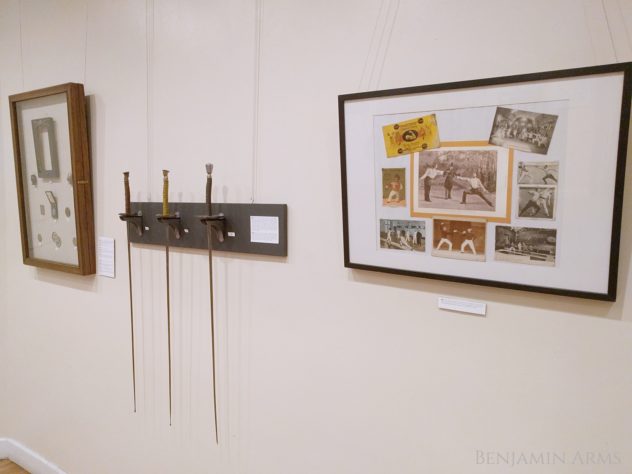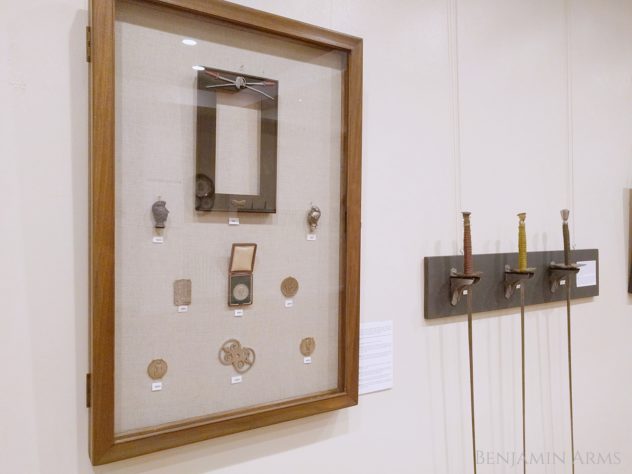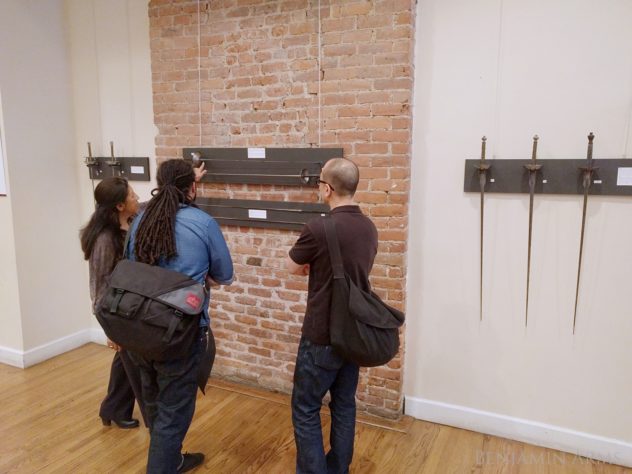Fencing Weapon Exhibit
Benjamin Bowles, owner and swordmaker at Benjamin Arms co-curated the 19th Century Fencing Weapons & Memorabilia Exhibit at La Nacional in New York City on October 20th, 21st, and 22nd. The exhibit featured forty items including fencing weapons, medals, postcards, statues, masks, and more from the private collection of Jeannette Acosta Martinez. This fencing weapon exhibit was open to the public at La Nacional-Spanish Benevolent Society in New York City. The Friday opening included a walk-through by curators Benjamin Bowles and Jeannette Acosta-Martinez of the Martinez Academy of Arms detailing the importance and manufacture of each object.
The fencing weapon exhibit detailed how weapons, plates, statues and the rest were all fine examples of decorative arts, and in many cases were representative of the excessive material culture of the 19th century. Benjamin lectured on the manufacturing methods and ideology of the 19th century, stressing how each weapon in the exhibit, regardless of its decoration, was still a fully functional tool hand-assembled at the final stage.
19th Century Manufacturing Trends
The production of fencing weapons in the 19th century reflect manufacturing trends of the time. Weapons were produced quickly and at unprecedented numbers. The new mass-manufacturing methods, however, did not fundamentally alter the ways of their production, only the rapidity and quantity. Blades continued to be forged, however now assisted by hydro-powered trip hammers in France, and steam or diesel-powered mechanical forges in Germany. Guards, crossbars, and pommels were still cast in brass or bronze, but were produced rapidly and reliably using permanent steel moulds. The weapons were still hand assembled and finished. The resulting product met demand without sacrificing the manufacturing methods crucial to the product’s functionality.
At the same time, artisans fearing the loss of their expertise to mass-production demonstrated the greatest capabilities of their skills by ornamenting luxury models. In Solingen, Germany, where sword and knife companies dominated the world market due to their manufacturing ingenuity, specific craftsmen called die Einsteckreider built the most precious weapons with a level of craftsmanship and detail unobtainable in a factory. Ornamentation on fencing weapons included acid etching, hand engraving, bluing, nickel plating, or gilding of the blade or hilt components. Some were made completely unique by utilizing one-of-a-kind and hand-made parts. These elaborate weapons were built to be the completely functional fencing swords of the upper class.
